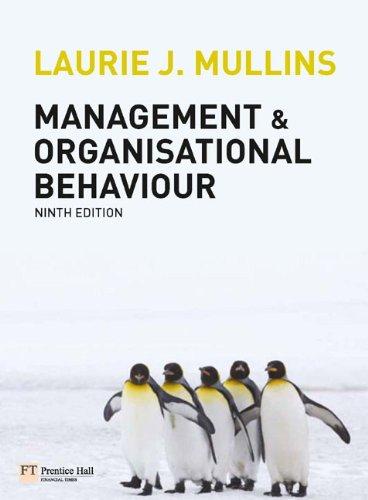Reports of the death of middle management were not merely exaggerated, they were wrong. Yes, organisations have
Question:
Reports of the death of middle management were not merely exaggerated, they were wrong. Yes, organisations have de-layered. Yes, the current ‘white-collar’ recession is having a big impact on the middle tier of professionals within businesses. But middle managers have not been abolished.
They are still here, hard at work. That is one reason that the book The Truth About Middle Managers by Paul Osterman is welcome. It attempts to take a serious look at the reality of middle management. The author has made a sincere attempt to shed more light on this under-analysed cadre of managers. Sincere but also, regrettably, flawed. The author defines his terms clearly enough. ‘Senior management makes the decisions that set the organisation’s course, whereas middle management interprets and executes those decisions,’ he writes. Based on his research, Osterman tests some of the common assumptions made about middle managers.
It is not true, he argues, that middle managers are sinking into a pit of despair as their numbers fall and job insecurity rises. In fact, in the US at any rate, there are more managers than ever. They are ‘less secure, but more in demand’. Nor is it true, Osterman asserts, that middle managers are alienated from their work and have little commitment to what they do. ‘Middle managers are the glue that holds organisations together,’ he writes.
Middle managers very much enjoy what they do and have what I term a strong craft commitment to their work. But it is also true they have lost their loyalty to their firm. As organisations have divested themselves of managerial levels, core managerial responsibilities have been pushed down to middle management. Middle managers are now the negotiators between different interests and are making key decisions about trade-offs.
That is certainly true, as is his other observation, In the past the nature of the firm was stable, whereas today it is constantly being reshaped. The continuous organisational turmoil that ensues creates an environment that seems chaotic and out of control from the perspective of middle management.
So why has he come up with some relatively sunny conclusions?
A key part of the research for this book involved in-depth interviews with 50 middle managers from two separate organisations, a bank and a high-tech company. But these interviews were conducted in 2004 and 2005. How were your prospects back then? A lot better than today, we can assume. Second, who were these managers? Osterman explains: ‘The middle managers were chosen randomly from a list provided by the human resources staff in each organisation.’ Did HR allow any malcontents, whingers and otherwise less-than-upbeat people to be interviewed? It seems unlikely. So we must be sceptical – insecurity is real, not imagined, and disillusionment is widespread. As one of his witnesses said, even then, ‘I think if you asked people if they had a choice today whether they’d take a job or take the [redundancy] package, you’d get a fair number of people whose hands would be raised for the package – mine included.’
Discussion questions
1. This article describes some research into management and organisational behaviour. Explain which of the approaches to organisational behaviour outlined in the chapter you think Osterman takes, and why.
2. What does the article tell us about the problems associated with researching organisational behaviour? How can such problems be minimised or avoided?
Step by Step Answer:

Management And Organisational Behaviour
ISBN: 9780273728610
9th Edition
Authors: Laurie J. Mullins, Gill Christy





